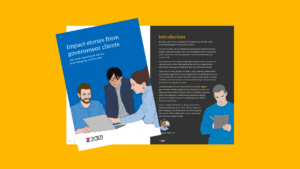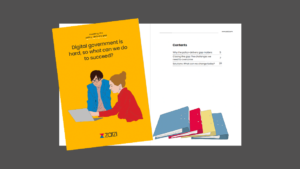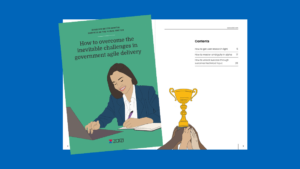Tag: gds
-

All green! Why passing the government Service Standard assessment matters more than ever
Blog -

GDS’s research into AI in government – and how to deliver real value
Blog -

Impact stories from government clients
ebook -

Avoiding the policy-delivery gap: Digital government is hard, so what can we do to succeed?
Report -

3 ways to master agile delivery in government
Blog -

How to overcome the inevitable challenges in government agile delivery
ebook -

Why you should involve solutions architects early in agile projects
Blog -

Discovery to alpha: Mastering ambiguity in digital public service delivery
Blog -

User research in government digital services: 7 steps to get it right
Blog -

Service design at Zaizi: How we’re sharing our skills with our clients
Blog -

Watch: The what, why and how of a ‘Discovery Phase’
Blog -

GDS’ updated Service Standard comes into force — what does it mean?
Blog
